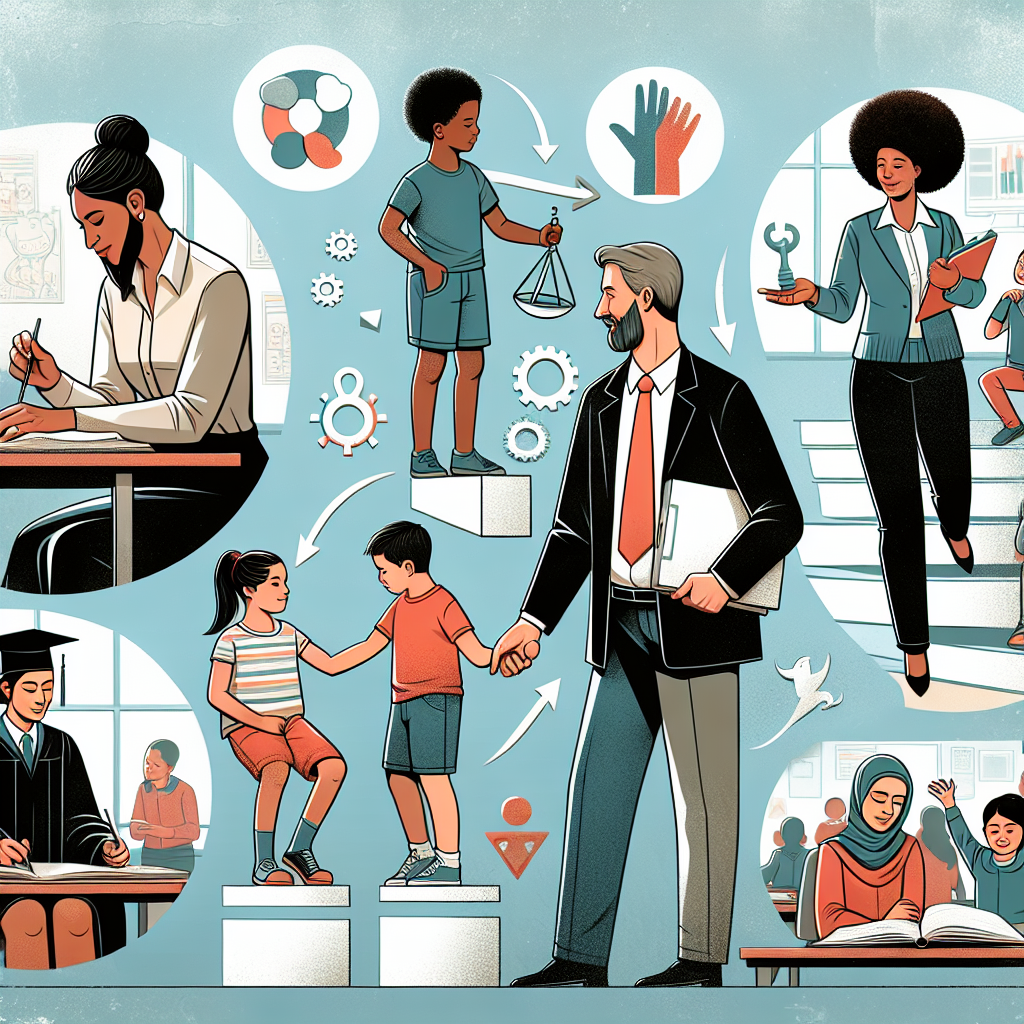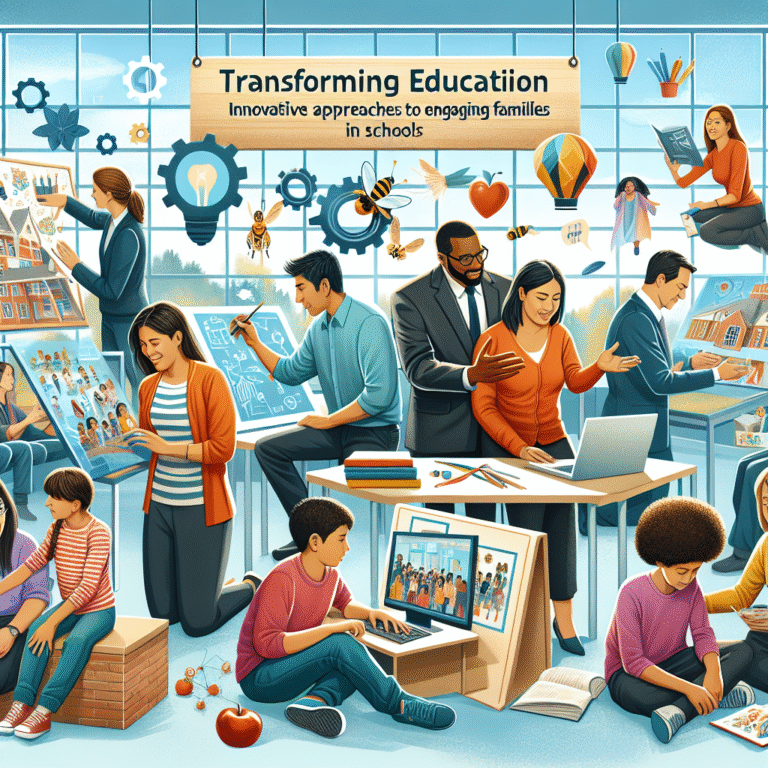
Introduction
In today’s educational landscape, the necessity for effective individualized intervention strategies cannot be overstated. As educators strive to meet the diverse needs of their students, one powerful framework has emerged: Response to Intervention (RTI). A Closer Look at RTI: Strategies for Effective Intervention explores this model, guiding educators through its foundational principles, real-world applications, and effective practices to ensure that every student receives the support they need to thrive academically and socially. This article aims not just to inform but to inspire with actionable strategies that can transform educational outcomes.
Understanding RTI: What It Is and Why It Matters
The Foundation of RTI
Response to Intervention is a multi-tiered approach designed to identify and support students with learning and behavior needs. The model emphasizes several critical components:
- Universal Screening: Assessing all students to identify those who may require additional support.
- Tiered Interventions: Providing varying levels of intervention based on the student’s needs.
- Data-Driven Decision Making: Regularly monitoring student progress to inform instructional strategies.
Why RTI?
A Closer Look at RTI: Strategies for Effective Intervention highlights the importance of RTI not just as a pedagogical framework, but also as a proactive measure for improving student performance. By intervening early, educators can prevent academic failure and foster a more inclusive classroom environment.
Key Components of RTI
Tier 1: High-Quality Classroom Instruction
At the first tier of RTI, all students receive high-quality, evidence-based instruction. This stage is crucial, as it serves as the foundation for identifying students who may need further assistance.
Case Study: Quality Instruction at Jefferson Middle School
At Jefferson Middle School, educators implemented bi-weekly training sessions to enhance instructional techniques. They incorporated diverse teaching strategies to cater to various learning styles, which notably improved student engagement and performance in initial screenings.
Tier 2: Targeted Interventions
In Tier 2, students identified as at-risk through assessments receive targeted support. This could involve small-group instruction focused on specific skill deficits.
Example: Reading Intervention Group
Students struggling with reading at Washington Elementary participated in a small-group reading intervention that utilized highly structured and individualized lesson plans. The focus was on phonemic awareness and fluency, enabling significant strides in their reading capabilities.
Tier 3: Intensive Intervention
For students who do not respond adequately to Tier 2 interventions, Tier 3 provides more intensive, individualized support. This tier often requires one-on-one instruction and frequent assessments.
Case Analysis: Success in Tier 3 at Lincoln High
A student at Lincoln High struggling with math was provided one-on-one tutoring, specifically tailored to address her learning gaps. The tutor used manipulatives and interactive technology, resulting in notable progress as illustrated by both formative assessments and the student’s confidence.
Strategies for Effective RTI Implementation
Data Collection and Analysis
A Closer Look at RTI: Strategies for Effective Intervention emphasizes the significance of data in driving instructional decisions. Educators should engage in systematic data collection through regular screenings and use assessment tools to track student progress.
- Data Types: Consider utilizing formative assessments, standardized tests, and behavioral assessments to create a comprehensive profile of each student’s performance.
| Data Type | Purpose |
|---|---|
| Formative Assessments | Measure ongoing learning |
| Summative Assessments | Evaluate overall student achievement |
| Behavioral Assessments | Identify social-emotional needs |
Professional Development
To sustain an effective RTI framework, ongoing professional development for teachers is essential. Building capacity among educators leads to a better understanding of strategies, assessments, and interventions.
Case Study: Staff Development at Grant High School
Grant High School invested in monthly professional workshops focused on RTI strategies. As a result, teachers felt more equipped to identify struggling students and implement tiered interventions effectively.
Collaboration and Communication
A collaborative approach involving educators, specialists, and families ensures that interventions are holistic and integrated. Regular communication keeps all stakeholders informed and involved in the student’s progress.
Example: Family Engagement at Maplewood Academy
Maplewood Academy held regular meetings with families to discuss student progress and strategies being implemented in school. This partnership led to enhanced student outcomes and greater family support for educational efforts.
Monitoring Progress and Adjusting Interventions
The Importance of Monitoring
Monitoring student progress is a central tenet of RTI. Continuous assessment allows educators to:
- Identify students who may need to move up or down tiers.
- Modify interventions to better meet student needs.
- Evaluate the effectiveness of strategies over time.
Making Data-Driven Adjustments
When monitoring reveals that a strategy is not working, adjustments must be made. This might involve:
- Changing the intervention methodology.
- Increasing the frequency of interventions.
- Adapting instructional materials to better suit the learners’ needs.
Case Analysis: Responsive Adjustments at Oakview High
At Oakview High, teachers regularly reviewed data, leading to a shift in a math intervention that was initially not yielding results. The introduction of blended learning tools and adaptive technologies dramatically increased engagement and understanding among struggling students.
Conclusion
A Closer Look at RTI: Strategies for Effective Intervention reveals that the heart of RTI lies in its tiered approach, evidence-based practices, and emphasis on continuous improvement through data. By integrating these strategies into everyday teaching, educators can not only enhance individual student outcomes but also foster a more equitable learning environment.
The journey towards effective intervention requires dedication, collaboration, and a commitment to ongoing development. Let us pledge to champion these strategies in our schools, ensuring that every child receives the support they need to succeed.
FAQs
1. What is the primary goal of RTI?
The primary goal of RTI is to identify students who need additional support and provide evidence-based interventions tailored to their specific needs.
2. How is student progress monitored in RTI?
Student progress is typically monitored through regular assessments, including observational assessments, formative tests, and standardized testing.
3. At what point should students be moved between tiers of intervention?
Students should be moved between tiers based on regular assessment data indicating their response to interventions. This ensures that they receive the appropriate level of support.
4. What role do parents play in RTI?
Parents are essential partners in the RTI process. They can provide insights into their child’s learning patterns and collaborate with educators to support interventions at home.
5. Can RTI be applied in all subject areas?
Yes, while RTI is often associated with reading and math, its principles can be applied across all subjects to support a range of academic and behavioral needs.
In conclusion, A Closer Look at RTI: Strategies for Effective Intervention offers critical insights and practical strategies to enhance the effectiveness of educational interventions. By embracing this framework, educators can significantly impact student success and foster an inclusive learning environment for all.


















